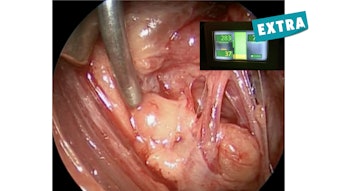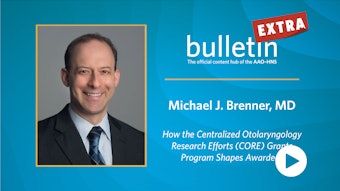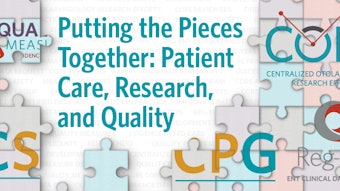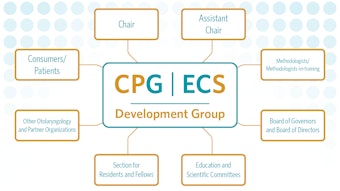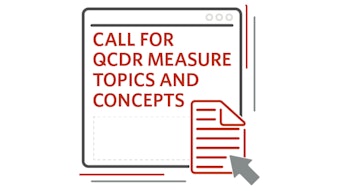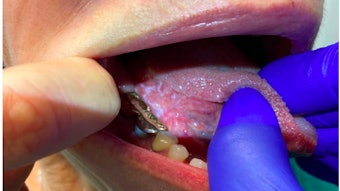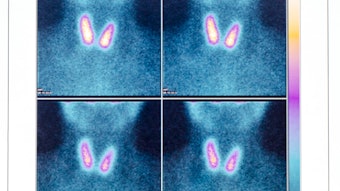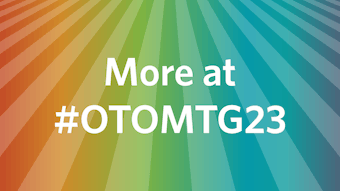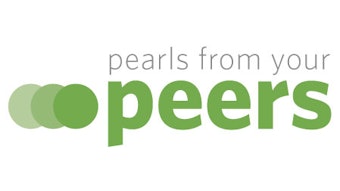Complementary Approaches to Chronic Pain Management
This overview aims to provide an introduction of some complementary approaches to chronic pain that might be relevant for otolaryngology practitioners.
Liuba Soldatova, MD, and Ronda A. Hamaker, MD, Complementary/Integrative Medicine Committee Members

Due to the opioid epidemic in the United States and prevalence of chronic pain among the U.S. population, there has been an increased interest in alternatives to opioids for the management of chronic pain in recent years—even though this has been a controversial topic in medicine for decades due to the highly addictive nature of most medications used to treat chronic pain.1 Complementary medicine is a term used when nonconventional treatments are used in addition to conventional medical therapies.
Because our patient population has become more aware of the dangers of opioid addiction, many patients we treat turn to complementary and alternative medicine (CAM) while searching for chronic pain relief. Unfortunately, most otolaryngologists may feel that their knowledge base is limited when it comes to meaningful discussions on this subject matter. This overview aims to provide an introduction of some complementary approaches to chronic pain that might be relevant for otolaryngology practitioners.
Acupuncture
This ancient Chinese practice has been used for over 3,000 years to manage acute and chronic pain. This technique is grounded in the belief that a life force called, “Chi (or Qi)” circulates within the body in lines called meridians, and this circulation can be disrupted by any disease process. Acupuncture works to restore a healthy energy flow by freeing the body’s Chi channels, ultimately reducing pain.2
Several different forms of acupuncture exist, including needling, moxibustion, and cupping.3,4 Needling involves needle insertion into various meridian points, typically 32-26 gauge. Needles are typically made of ceramic, bronze, iron, gold, silver, or stainless steel. Laser acupuncture uses nonthermal lasers to stimulate meridian points. In moxibustion, moxa is burned above the skin near meridian points. Cupping involves bamboo, ceramic, or glass cups that are used to create a vacuum over the acupuncture points.
The role of acupuncture in pain relief is thought to be due to the release of endorphins, chemicals that block pain. Many acupuncture points are located near the nerves, which when stimulated, cause pain sensation. Endorphins are chemicals that are released by our brain to block pain sensation. Stimulation of the acupuncture points located along the nerves responsible for chronic pain can trigger release of endorphins, which is thought to provide pain relief.
A recent meta-analysis of six randomized controlled trials found moderate evidence to support benefits of acupuncture for neck pain. All included studies reported a reduction in neck pain compared to the placebo.5 A 2021 study compared optimized, shallow, or placebo acupuncture for four weeks in management of cervical degenerative disc disease pain and reported more pain relief with optimized acupuncture relative to the shallow and placebo groups.6 A large 2012 study compared true and sham acupuncture and found that true acupuncture was more effective than sham techniques in chronic pain management suggesting that the pain relief benefits of this technique are not due to the placebo effect.7
Mind-Body Therapies
Relaxation techniques and meditation are widely regarded to be stress reduction techniques. Stress reduction is crucial in chronic pain management. There are many forms of meditation. Mantra meditation is a form of meditation where a person uses a mantra or sound to help the mind transcend the process of thought. In transcendental meditation, a person mentally repeats a word or phrase until they reach a state of inner peace. Mindfulness meditation involves active awareness of the mind and active focusing of the awareness on the present moment. Although the origins of meditation are closely bound to ancient religious beliefs, the practice has become more common outside of its religious context. Prior studies found that it can help relieve chronic pain, improve mood, and reduce stress and anxiety.
A small 2012 study found that mindfulness techniques such as meditation can reduce pain and anxiety by more than 20%.8 Another review article found that people who meditate regularly were less sensitive to pain compared with controls based on brain MRI scans.9 A 2019 study of mindfulness and pain revealed that both novice and experienced meditators alike had lower pain sensitivity.10
There is good evidence that yoga can help with chronic pain including neck pain. Yoga is a meditative movement practice from ancient India and can help with stress reduction and with overall fitness. Yoga teaches that breathing can link mind and body when inhalation and exhalation are combined with certain poses called asanas. This can lead to relaxation and improved strength and flexibility.11 It has been shown to improve the quality of life in cancer survivors.12
Tai Chi is a Chinese mind-body exercise that has been used for disease prevention in Asia for hundreds of years. Most people use this exercise for overall wellness, but this technique can also be used for chronic pain.13 Another similar technique is Quigong, and unlike Tai Chi, which is a form of martial arts, this technique is performed while standing or sitting with less active movements. The goal of both practices is to increase or release more body energy, also known as Chi or Qi, that improves balance and well-being. It is not currently well-understood how these two mind-body techniques reduce chronic pain, but experts believe that chronic pain relief stems from reduced muscle tension, a calmer nervous system, release of endorphins as with any physical activity, and improved blood flow.
Touch
The power of human touch is known to be healing for many patients, which is reflected in the phrase “healing touch.” Massage therapy and Reiki therapy both involve touch with the human hands. Massage therapy is defined as a patterned and purposeful manipulation of soft tissue for therapeutic purposes to prevent or reduce pain, spasm, tension, or stress and to promote health and wellness.14 Massage therapy is recognized by the National Institutes of Health (NIH) and is also included by The Joint Commission, U.S. Department of Defense, and U.S. Veterans Administration as a nonpharmacologic therapy to treat pain. The relevant conditions for massage therapy pertinent to otolaryngology include neck and shoulder pain, headache, cancer management, and postoperative pain.15
Massage has been used since the second century to treat a variety of ailments. Chinese and Egyptian historical records, including ancient tombs, show evidence of massage as a frequent aspect of medical treatment. It is thought that when it comes to chronic pain management, massage therapy addresses the body’s fight or flight response. Massage therapy was shown to decrease cortisol levels and levels of substance P responsible for activation of nociceptive (aka pain) pathways, while elevating dopamine and serotonin levels.16,17
There are several types of massage. Swedish Massage kneads and rolls muscles and should not be painful to touch. Hot Stone Massage involves hot stone placement to accomplish relaxation and pain relief. Deep Tissue Massage uses deep pressure and can result in feeling sore. Trigger Point Massage applies pressure to a specific spot to release muscle tension and pain. Myofascial Release Massage kneads and rolls the fascia. Shiatsu technique uses firm pressure on various acupressure points to stimulate them and balance the body’s energy. A study in patients with fibromyalgia reported improved pain intensity, sleep quality, and symptoms when using Shiatsu.18
A 2016 meta-analysis of the randomized controlled trials of patients experiencing pain in the general population concluded that there is evidence to suggest that massage therapy may be beneficial for improving patient reported functional outcomes and recommended offering it to patients for pain management.19
Reiki therapy is a Japanese technique developed in early 1900s and uses a gentle and noninvasive form of hands-on, energy-based healing. Reiki aids in healing by helping people become more energy balanced physically, emotionally, mentally, and spiritually. It is thought to use a healer as a conduit between the patient and universal life force. There is no pressure manipulation of tissue in Reiki, but like acupuncture, Tai Chi, and other mind body therapies, it uses the Chi or Qi body energy.20 Even though no randomized controlled trials have been conducted thus far to evaluate the effectiveness of this technique, there are many reports of positive outcomes.
Conclusion
CAM alternatives to conventional treatments for chronic pain provide evidence-based options for patients with chronic pain who would like to avoid opioid use. These techniques have been used for centuries with proven results. We hope that this brief overview will help readers understand more about CAM alternatives available to otolaryngology-head and neck surgery patients who suffer from chronic pain.
References
- Clarke TC, Black LI, Stussman BJ, Barnes PM, Nahin RL. Trends in the use of complementary health approaches among adults: United States, 2002-2012. Natl Health Stat Report. 2015 Feb 10;(79):1-16.
- Chronic pain and complementary health approaches: What you need to know. National Center for Complementary and Integrative Health. http://nccam.nih.gov/health/pain/chronic.htm. Accessed February 19, 2015.
- Lao L. Acupuncture techniques and devices. J Altern Complement Med. 1996 Spring;2(1):23-5. doi: 10.1089/acm.1996.2.23.
- Wilkinson J, Faleiro R. Acupuncture in pain management. Contin Educ Anaesth Crit Care Pain. 2007;7(4):135–8.
- Farag AM, Malacarne A, Pagni SE, Maloney GE. The effectiveness of acupuncture in the management of persistent regional myofascial head and neck pain: A systematic review and meta-analysis. Complement Ther Med. 2020 Mar;49:102297. doi: 10.1016/j.ctim.2019.102297.
- Chen L, et al. Optimized acupuncture treatment (acupuncture and intradermal needling) for cervical spondylosis-related neck pain: A multicenter randomized controlled trial. Pain. 2021 Mar 1;162(3):728-739.
- Vickers AJ, Cronin AM, Maschino AC, et al. Acupuncture for Chronic Pain: Individual Patient Data Meta-analysis. Arch Intern Med. 2012;172(19):1444–1453.
- Gard T, Hölzel BK, Sack AT, Hempel H, Lazar SW, Vaitl D, Ott U. Pain attenuation through mindfulness is associated with decreased cognitive control and increased sensory processing in the brain. Cereb Cortex. 2012 Nov;22(11):2692-702.
- Wielgosz J, Goldberg SB, Kral TRA, Dunne JD, Davidson RJ. Mindfulness Meditation and Psychopathology. Annu Rev Clin Psychol. 2019 May 7; 15:285-316.
- Zeidan F, Salomons T, Farris SR, Emerson NM, Adler-Neal A, Jung Y, Coghill RC. Neural mechanisms supporting the relationship between dispositional mindfulness and pain. Pain. 2018 Dec;159(12):2477-2485.
- Tekur P, Singphow C, Nagendra HR, et al. Effect of short-term intensive yoga program on pain, functional disability, spinal flexibility in chronic low back pain: A randomized control study. The Journal of Alternative and Complementary Medicine. 2008;14(6):637-644.
- Culos-Reed SN, Carlson LE, Daroux LM, et al. A pilot study of yoga for breast cancer survivors: Physical and psychological benefits. Psycho-Oncology. 2006;15(10):891-897.
- Jahnke R, Larkey L, Rogers C, Etnier J, Lin F. A comprehensive review of health benefits of qigong and tai chi. Am J Health Promot. 2010 Jul-Aug;24(6):e1-e25. doi: 10.4278/ajhp.081013-LIT-248.
- Nuray E, Ugu C (2019). Massage therapy in chronic musculoskeletal pain management: a scoping review of the literature. Medicina Sportiva, 15(1)3067-3073.
- American Massage Therapy Association (2018) Massage Therapy in Integrative Care and Pain Management. 2018 p8.
- Field T, Hernandez-Reif M, Diego M, Schanberg S, Kuhn C. Cortisol decreases and serotonin and dopamine increase following massage therapy. Int J Neurosci. 2005 Oct;115(10):1397-413. doi: 10.1080/00207450590956459.
- Pinar S, Ugur K, Ferhat A. Pain in older age. Editor(s): Suresh I.S. Rattan, Encyclopedia of Biomedical Gerontology, Academic Press. (2020) pp 1-7. https://doi.org/10.1016/B978-0-12-801238-3.11404-7.
- Yuan, S, Bersanneti, A, et al. (2013). Effects of Shiatsu in the management of fibromyalgia symptoms: A controlled pilot study. Journal of Manipulative and Physiological Therapeutics 36(7) 436-443.
- Crawford, C, Boyd, C, et al. (2016) Review article: The impact of massage therapy on function in pain populations: A systematic review and meta-analysis of randomized controlled trial: Part 1. Pain Medicine. 17:1353-1375.
- What is Reiki, and does it really work? Health Essentials. Cleveland Clinic. August 30, 2021. https://health.clevelandclinic.org/reiki/
